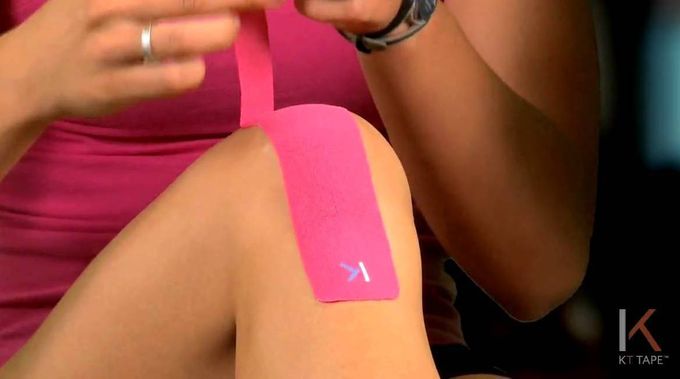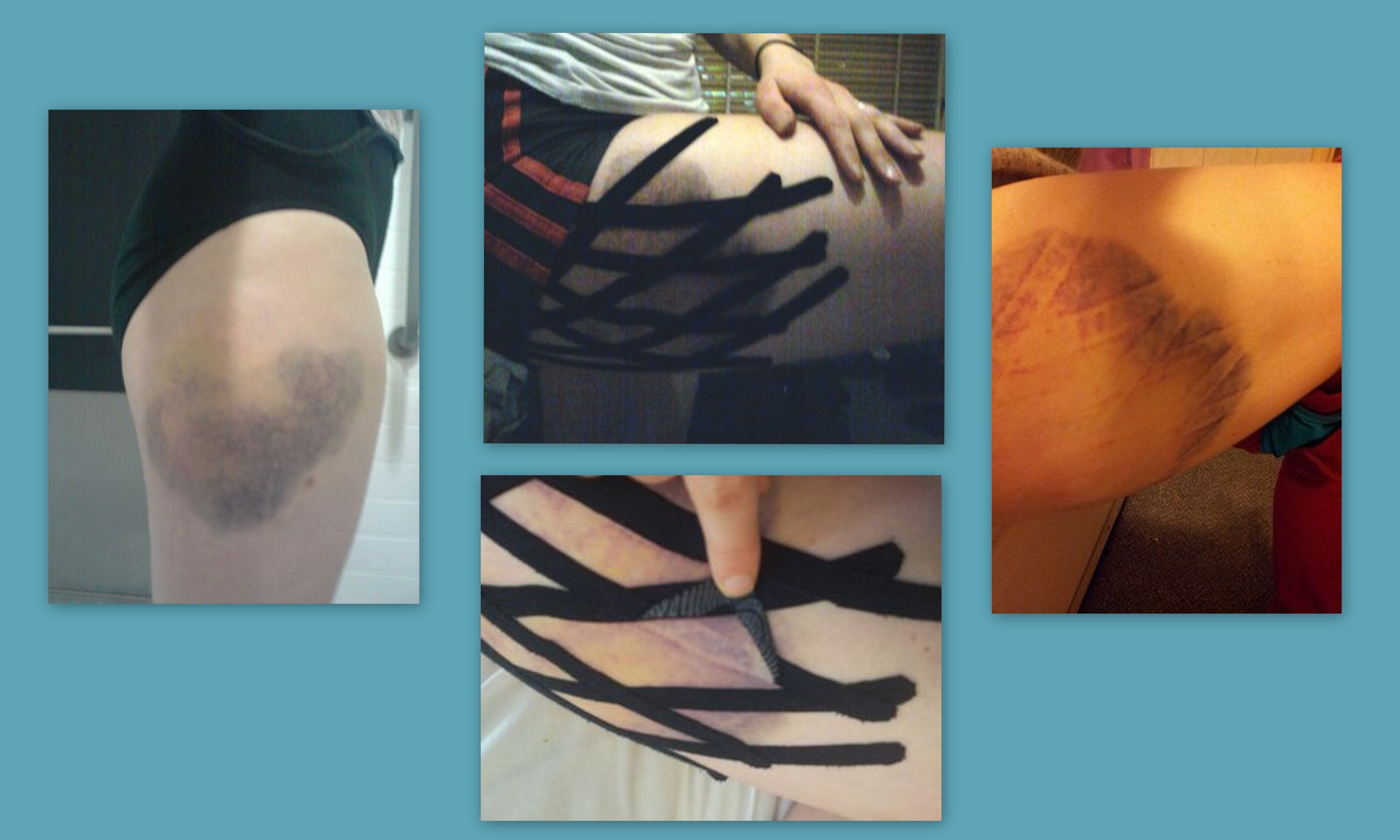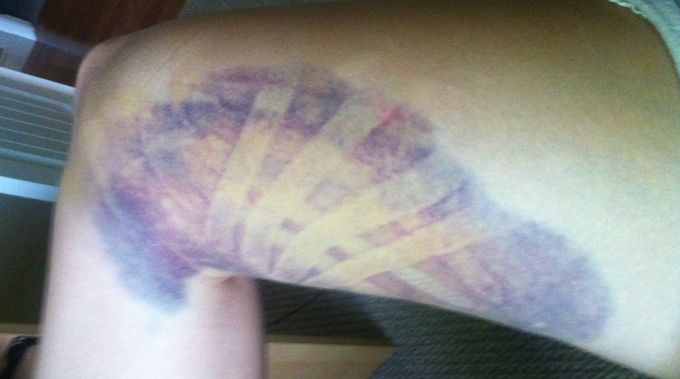
K-Tape is a controversial topic among physiotherapists – some are convinced of its healing properties, whilst others believe it’s a placebo at best. Regardless, we know that many athletes use it and believe it to be effective.
Kinesio tape (named after Japanese chiropractor Dr Kenzo Kase), or K-tape, is used to promote healing, and to support muscles.
Just under a year ago, I had the (rather painful) opportunity to put K-tape to the test – in a very visual manner. I’d had it used for achy muscles before, and always found it pretty effective, but since there was no visual element to the healing, I could never say for sure if the impact was just a placebo.
When I fell on ice, and bruised up my hip, however – I got to put the tape to the test for proper. Before we more on to the picture story – let me re-cap…
How does Kinesio Tape Claim to Work?
K-Tape is stretchy tape that is applied to the skin. There are multiple theories on how it works – but the two most prominent are:
- It re-trains the brain how muscles should be operating when the pain is caused by an incorrect movement (more information here)
- It literally lifts skin from muscle, allowing for extra space for increased blood flow – which promotes healing (more wordy and scientific description here)
The second theory is most relevant when we’re discussing using K-tape to treat a bruise.
A bruise – also called a contusion – forms when small veins and capillaries under the skin break – causing internal bleeding. Bruises are usually not serious, but they can be painful, especially when they cover a large surface area.
When K-tape is used on a bruise, the tape is used to allow the blood to drain, also encouraging fresh blood (full of oxygen and nutrients) to travel to the area and promote healing.
So – does it work?
Soon after I decided to deposit myself on the road, a large bruise appeared on my hip. Initially, it was fairly light, but got stronger and was soon painful to lie on, and also hurt when I was pedalling with any force greater than gentle spinning.
I took myself to Parkview Clinic, where my trusty osteopath looked at me, chuckled, tutted a bit and made some comments along the lines of “Michelle, how do you manage to so frequently inflict damage upon yourself” etcetc.
He then covered my leg in a rather elaborate design. I can’t say I was totally convinced that the spiderweb was going to have any impact at all.
Well – shame upon my unbelief. Two days later, I couldn’t help but have a little peak underneath the tape – and I noted that everywhere the tape was stuck to me, the bruising was markedly less notable.
The pain when leaning on the bruise (girls gotta sleep!) and when pedalling (can’t keep me off the bike long) were decreased within around four days. Eventually, it was time for the tape to come off – and the improvement where it had been placed was clear:

It’s true that the evidence around the effectiveness of k-tape is limited. However, anecdotal evidence is strong, and it certainly doesn’t seem to do any harm.
I’m not the only person to have witnessed the benefits – there are plenty of examples of similar experiences.

It is worth remembering that though anyone can plaster themselves in sellotape, there is quite a bit of theory behind correct application of k-tape. You can buy it off-the-shelf in a pharmacy, but you are probably best visiting a qualified physiotherapist or osteopath.
For more expert opinions on K-Tape, check out this post.
If you’re currently suffering from an injury, take a look at our 5 Ways to Speed up Recovery from Cycling Injuries.





